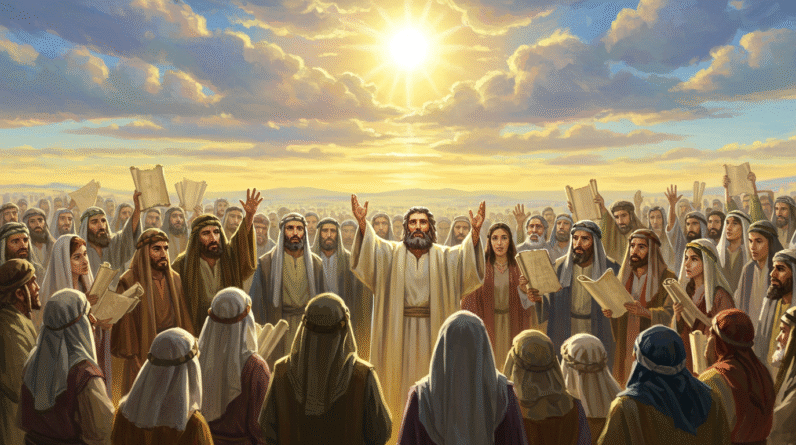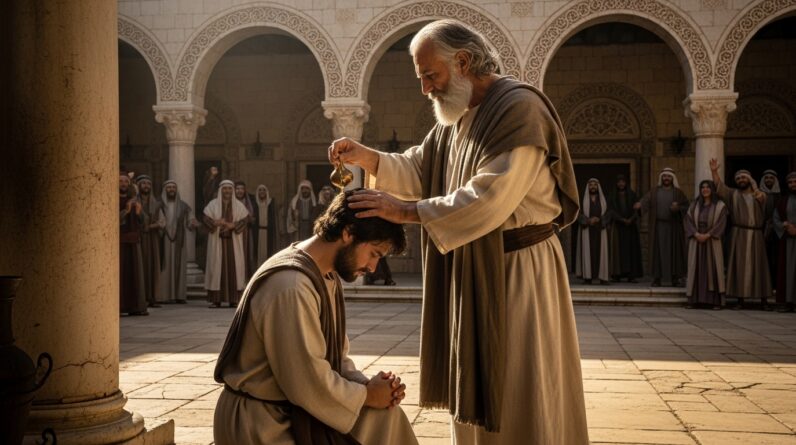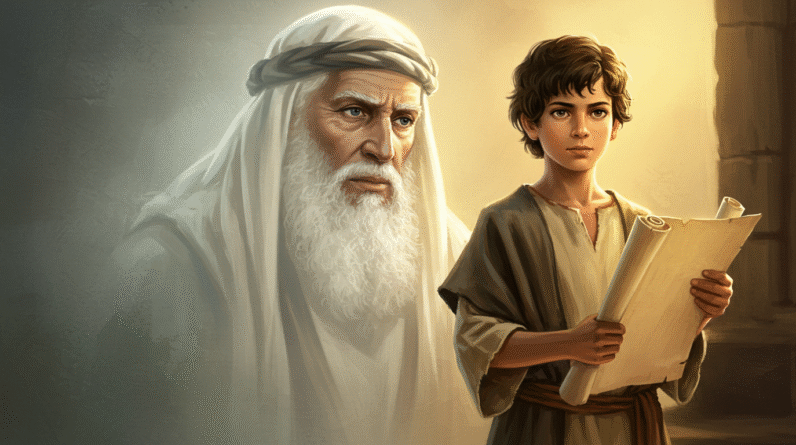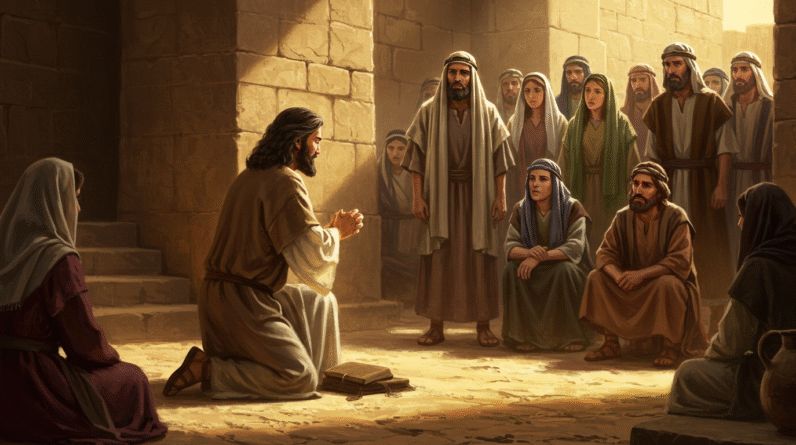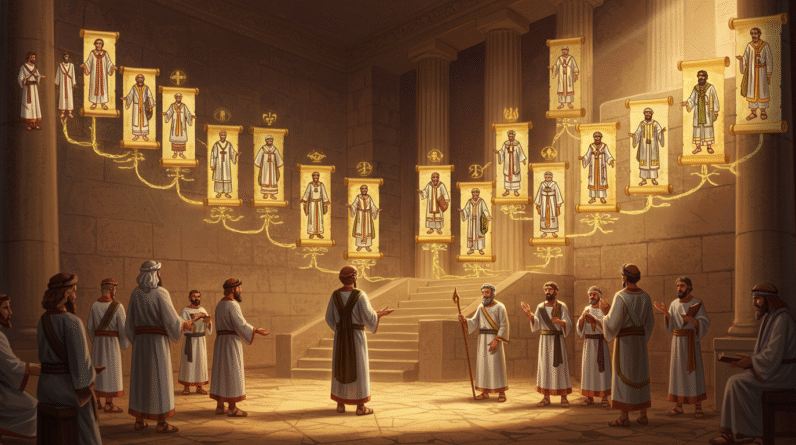Delve into the inspiring journey of Jeshua, a pivotal priest from biblical history, as he leads through faith and renewal amidst the ruins of a lost temple.
Jeshua (Son of Jozadak): A Priest’s Journey Through Restoration

Introduction
Imagine standing amidst the ruins of a once-glorious temple, with echoes of past worship reverberating faintly in the air. This is where the story of Jeshua (son of Jozadak) begins—a tale marked by faith, restoration, and leadership in a time of significant upheaval for the Israelites. Jeshua’s journey is not just a footnote in biblical history but a pivotal chapter in the narrative of redemption and hope. As you dive into his life and experiences, you’ll discover why his story matters and how it resonates with themes of perseverance and renewal.
Who Was Jeshua (Son of Jozadak)?
Jeshua, the son of Jozadak, emerges in biblical records as a significant spiritual leader during a transformative era for the Jewish people. He belonged to the lineage of priests, a heritage tracing back to Aaron, the brother of Moses. This ancestry placed Jeshua in the esteemed position of high priest—a role that was both a privilege and a profound responsibility. He is notably recognized for his leadership during the return of the Israelites from Babylonian exile, as detailed in the Book of Ezra. Jeshua’s story unfolds against the backdrop of a people stripped of their homeland, now poised to rebuild their lives and reclaim their spiritual centers. This pivotal figure is mentioned alongside his counterpart, Zerubbabel, as they spearheaded the reconstruction of the temple in Jerusalem, symbolizing the renewal of worship and faith for the community.
For scriptural grounding, you can explore Ezra 3:2, which introduces Jeshua’s active role in the religious revival following the return from exile. Here, Jeshua, alongside Zerubbabel, re-establishes the altar of the God of Israel, setting the stage for a renewed devotion and national identity.
Key Moments in Jeshua’s Life
Jeshua’s life is marked by transformative moments that highlight his role as a spiritual leader committed to the reconstruction of a nation’s faith and identity. One of the most significant episodes in his journey is the laying of the foundation for the Second Temple in Jerusalem. This act of rebuilding is not just a physical reconstruction but a powerful symbol of hope and continuity for a people long separated from their sacred spaces. Supported by his leadership, the community embarked on a process of not just architectural but spiritual renewal. You can read about this milestone moment in Ezra 3:10-11, where communal joy mingled with tears marks the foundation ceremony of the temple.
Another critical aspect of Jeshua’s journey is his effort to restore the priesthood’s sanctity and ensure that worship adhered to the traditions and laws given by God. Despite challenges, both external and internal, Jeshua remained steadfast, underlining the importance of faithfulness and religious integrity in leadership.
Lessons We Can Learn from Jeshua
Jeshua’s story is replete with lessons of resilience, faith, and leadership that continue to resonate with you in your spiritual journey today. From his unwavering dedication to rebuilding the temple, you can infer the lesson of hope and perseverance amidst adversity. Jeshua teaches the importance of community in worship and rebuilding faith collectively—an idea that finds relevance in contemporary faith practices.
His leadership style is a testament to balancing tradition with renewal. In maintaining religious rites amidst change, Jeshua exemplifies how preserving core values can guide successful transformation. This is a lesson for any leader striving to inspire others and build upon foundational ideals while embracing new challenges.
Biblical References & Context
Jeshua’s significance is chronicled in several key scripture passages that illustrate his contributions and the historical context of his life. In Ezra 3:2 and Ezra 3:8, you find records of Jeshua leading the building of the altar and the temple’s foundations—critical moments of spiritual renewal. Another mention is in Haggai 1:1, where Jeshua receives prophetic encouragement, emphasizing his importance in executing God’s plan for restoration.
These texts provide a framework that helps you understand the dynamics of the post-exilic period— a time when restoring national identity was as important as rebuilding infrastructure. Jeshua’s presence in these narratives underscores the value placed on spiritual leadership in this era of reformation.
Jeshua in the Bigger Picture
In the grand tapestry of the Old Testament, Jeshua is more than just a priest; he is an instrument of God’s divine restoration plan. His efforts in rebuilding the temple and reinstituting worship situate him as a crucial figure in preparing the way for future messianic developments alluded to in later texts. Jeshua’s actions resonate as foreshadowings of the ultimate restoration brought by Jesus, linking the two testaments in a profound narrative continuity.
Jeshua’s story reflects a microcosm of the broader redemptive arcs seen throughout the Bible. His leadership and dedication are a reminder of the persistent hope and divine faithfulness that threads through the entire biblical narrative.
Final Thoughts
Reflecting on Jeshua’s (son of Jozadak)’s journey offers a rich tapestry of leadership, faith, and communal restoration. As you ponder his legacy, consider the resilience and unwavering dedication required to inspire and lead during times of rebuilding and hope. Jeshua’s story is a testament to the power of collective faith and the enduring impact of spiritual leadership.
Acknowledgment: All Bible verses referenced in this article were accessed via Bible Gateway (or Bible Hub).


